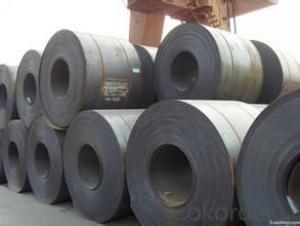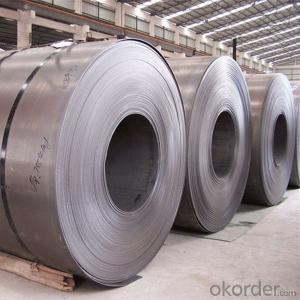Chequered Steel Sheets for Non Slip Car Using
- Loading Port:
- Qingdao
- Payment Terms:
- TT OR LC
- Min Order Qty:
- 500 m.t.
- Supply Capability:
- 5000 m.t./month
OKorder Service Pledge
OKorder Financial Service
You Might Also Like
Specification
1. Product Description
The Billets as raw materials, through furnace heating, high-pressure water to reduce the phosphorus, then entering the roughing mill, cutting head, end, and then put into the finishing mill, cutting the edge, after the times of straightening, leveling and other finishing line treatment, and then cutting board or coil becomes the hot rolled steel sheet and hot rolled steel coil.
2. Main Features
Characteristics of hot rolled steel hot-rolled steel is a high temperature heating and rolled steel, hot rolled product has high strength, good toughness, easy to processing molding and good weldability and other excellent properties, which are widely used in ship, automobile, Bridges, buildings, machinery, pressure vessels and other manufacturing industries.
4. Application
Our hot-rolled steel coil and sheet are applied to a wide range of uses such as automobile, electrical appliance, machinery manufacturing, container manufacturing, shipbuilding, bridge, pipeline, and receive high acclaim from our customers for its excellent quality.
5. FAQ
1.Q: Do you have attended any exhibition?
A: We almost go to Canton Fair and Overseas Exhibitions every year.
2. Q: How to guarantee the quality of the products?
A: We have established the international advanced quality management system,every link from raw material to final product we have strict quality test;We resolutely put an end to unqualified products flowing into the market. At the same time, we will provide necessary follow-up service assurance.
3. Q: How long can we receive the product after purchase?
A: Usually within thirty working days after receiving buyer’s advance payment or LC. We will arrange the factory manufacturing as soon as possible. The cargo readiness usually takes 15-25 days, but the shipment will depend on the vessel situation.
Why choose us?
Pre-sale Service
1. Sample can be offered with sample charge and courier fee by buyer's side.
2. We have full stock,and can deliver within short time.Many styles for your choices.
3. OEM and ODM order are accepted, Any kind of logo printing or design are available.
4. Good Quality + Factory Price + Quick Response + Reliable Service, is what we are trying best to offer you
5. All of our products are produce by our professional workman and we have our high-work-effect foreign trust-worthy sales team.
6. We have 18 years' experience of design, manufacture and sell lingerie, we cherish every order from our honor.
After you choose
1. Count the most efficient shipping cost and make invoice to you at once.
2. Check quality again, then send out to you at 1-2 working day after your payment.
3. Email you the tracking no, and help to chase the parcels until it arrive you.
- Q: were iron age weapons made of steel?
- No, the iron age was just iron. It was smelted down in open fires where temperatures can vary. There was a problem of not always being able to cook out all the impurities from the ore, which led to inconsistent strengths in finished products. People first discovered the properties and advantages of steel when charcoal (carbon) was added to smelted iron. I don't know when the first steel was made. But it must have been a more expensive process because it didn't appear in household products until around 1800. But I'm not sure on that.
- Q: How are steel coils used in the production of packaging machinery?
- Steel coils are used in the production of packaging machinery as they serve as the raw material for manufacturing various components of the machinery, such as frames, supports, and structural elements. The steel coils are processed through cutting, bending, and welding to create the necessary parts, ensuring durability and stability in the packaging machinery's construction.
- Q: I live in the Black Hills and I need to re-side my cottage. I like the look of vinyl. I've heard pros and cons about both steel and vinyl. Is steel really that easy to dent? It just doesn't look as 'clean' as vinyl. Also what 3 color combos do you like? My cottage has shutters.
- I'd like to know why you need to re-side it. I would get vinyl because it will not need painting as soon as steel.
- Q: What are the different grades of steel used in manufacturing steel coils?
- The different grades of steel used in manufacturing steel coils include low carbon steel, medium carbon steel, high carbon steel, and stainless steel.
- Q: How do steel coils contribute to the energy efficiency of buildings?
- Steel coils contribute to the energy efficiency of buildings in several ways. Firstly, steel coils are often used in the construction of roofs and walls, providing a durable and well-insulated structure that helps to minimize heat transfer and reduce energy loss. Additionally, steel coils can be coated with reflective materials, such as cool roof coatings, which help to reflect the sun's heat and reduce the cooling load on the building. Lastly, steel coils are also commonly used in the manufacturing of HVAC systems, ensuring efficient heating and cooling operations, further enhancing the energy efficiency of buildings.
- Q: can steel boil and turn into a gaseous state?? if so how hot does it have to be for it to boil
- well what for yo? melting point of steel is 800 degrees, oxidation being 1400 degrees.
- Q: How much should someone sell a 6 ft stainless steel counter? How about one with a sink?
- Ask for the best offer on OKorder and find out.
- Q: What are the safety precautions when handling steel coils?
- When handling steel coils, it is important to follow several safety precautions. First and foremost, workers should wear appropriate personal protective equipment (PPE) such as safety gloves, safety glasses, and steel-toed boots to protect themselves from potential injuries. Secondly, it is crucial to ensure that the area is clear of any obstructions or tripping hazards to prevent accidents. Additionally, workers should receive proper training on safe lifting techniques and use of lifting equipment to avoid strain or back injuries. It is also recommended to inspect the coils for any sharp edges or protruding objects before handling them. Lastly, communication and teamwork are essential to ensure the safe handling and maneuvering of steel coils, especially when using heavy machinery or cranes.
- Q: How are steel coils used in the manufacturing of wind turbines?
- Steel coils are used in the manufacturing of wind turbines to create the main structural components, such as the tower and the nacelle. These coils are shaped and welded to form the strong and durable framework that supports the turbine's blades and houses the generator. Additionally, steel coils are also used to fabricate other essential parts, such as the hub and the base, ensuring the stability and efficiency of the wind turbine.
- Q: Can steel coils be used in the production of furniture?
- Yes, steel coils can be used in the production of furniture. Steel coils are often used as a raw material in the manufacturing of various types of furniture, such as chairs, tables, and bed frames. Steel coils provide strength, durability, and stability to the furniture, making it suitable for heavy-duty use. Additionally, steel coils can be shaped into different designs and sizes, allowing for versatility in furniture production. The coils can be transformed into various components, such as the frame or support structure of the furniture, providing a solid foundation. Moreover, the use of steel coils in furniture production can enhance the overall aesthetics of the furniture, as they can be finished in different colors and coatings to match the desired style. Overall, steel coils are a common and practical choice for furniture manufacturers due to their strength, durability, and design possibilities.
Send your message to us
Chequered Steel Sheets for Non Slip Car Using
- Loading Port:
- Qingdao
- Payment Terms:
- TT OR LC
- Min Order Qty:
- 500 m.t.
- Supply Capability:
- 5000 m.t./month
OKorder Service Pledge
OKorder Financial Service
Similar products
Hot products
Hot Searches
Related keywords




























